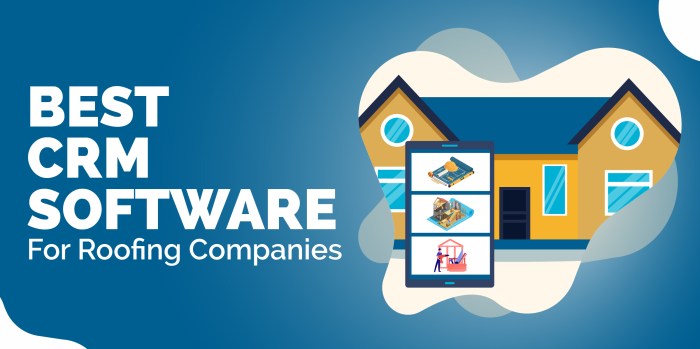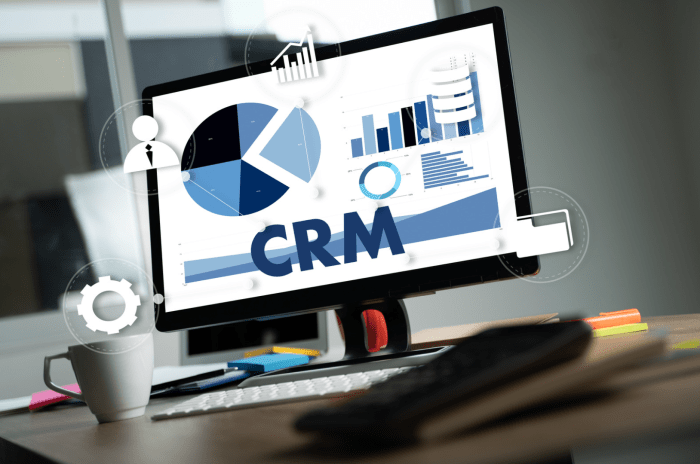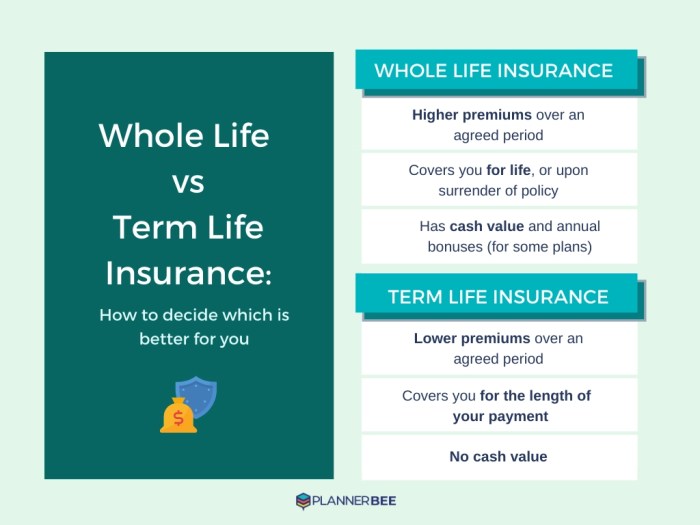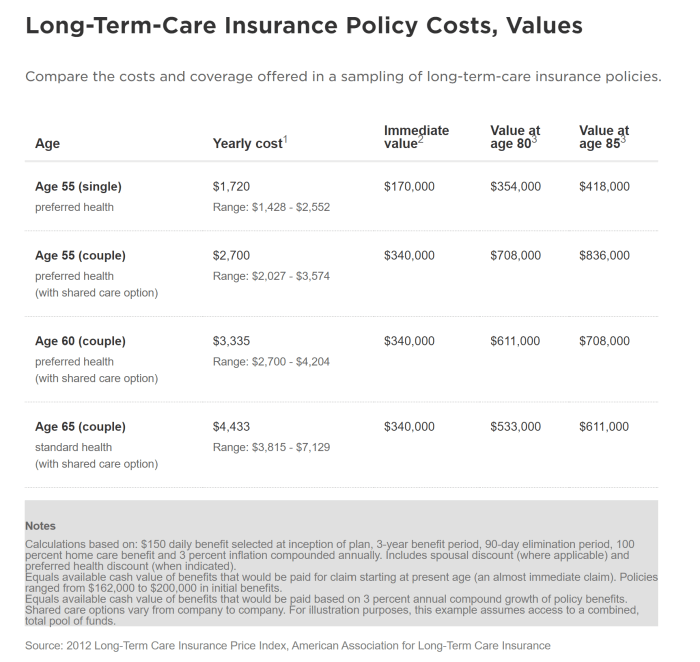Lead Management and Conversion: Crm For Roofing Contractors
Crm for roofing contractors – A robust CRM system is the tulang punggung (backbone) of any successful roofing contracting business. It provides the structure and tools necessary to effectively manage leads, transforming them from initial inquiries into paying customers. Efficient lead management is not just about collecting names; it’s about building relationships and converting prospects into loyal clients who recommend your services to others.
This ultimately leads to increased revenue and business growth.
Streamlining Lead Generation
A CRM system centralizes all incoming leads from various sources – website forms, phone calls, referrals, and even social media. This eliminates the chaos of scattered spreadsheets and sticky notes, providing a single, unified view of all potential clients. Automated workflows can be established to instantly assign leads to the appropriate team member, ensuring prompt responses and preventing leads from slipping through the cracks.
Real-time tracking allows you to monitor the progress of each lead, identifying bottlenecks and optimizing your lead generation strategies accordingly. For example, a roofing contractor using a CRM might see that leads from their Facebook ads convert at a higher rate than those from their website, prompting them to adjust their marketing budget accordingly.
Lead Management Workflow
The following steps illustrate a typical lead management process within a CRM:
1. Lead Capture
Leads are captured through various channels and automatically entered into the CRM.
2. Lead Qualification
The CRM automatically assigns leads based on pre-defined criteria (e.g., location, project size).
3. Initial Contact
Team members are notified of new leads and immediately reach out, scheduling consultations.
4. Consultation and Assessment
A detailed assessment of the roofing needs is conducted, and a proposal is prepared within the CRM.
5. Proposal and Quotation
The proposal, including a detailed cost breakdown, is sent to the client through the CRM.
6. Follow-up and Negotiation
The CRM tracks all communication, reminders for follow-ups are automatically generated.
7. Project Scheduling and Execution
Once the contract is signed, the project details are entered into the CRM, enabling seamless project management.
8. Project Completion and Feedback
Post-project satisfaction surveys are sent through the CRM, allowing for continuous improvement.
Effective CRM is crucial for roofing contractors to manage leads, projects, and client communication efficiently. Choosing the right system is paramount, and a thorough review of options is essential before committing. To aid this process, consult a comprehensive guide like this small business crm software comparison to find the best fit for your roofing business. Ultimately, selecting the appropriate CRM will significantly improve your operational efficiency and profitability.
Lead Nurturing and Follow-up Best Practices
Effective lead nurturing is crucial for converting prospects into clients. The CRM facilitates this by allowing for automated email sequences, personalized messaging, and targeted follow-up based on lead behavior. For example, a series of emails could be triggered automatically, providing valuable information about roofing materials, maintenance, and the contractor’s expertise. Regular follow-ups, even after a proposal has been submitted, demonstrate professionalism and keep the contractor top-of-mind.
Tracking engagement with these communications helps identify leads that require additional attention or a different approach. A well-structured CRM allows for segmentation of leads based on their stage in the sales funnel, enabling targeted communication strategies. For instance, leads who have downloaded a brochure might receive different emails than leads who have requested a quote.
Lead Management Workflow Flowchart
Imagine a flowchart starting with a “New Lead” box. Arrows branch out to “Lead Qualification” (yes/no), then to “Contact Lead” (phone/email), followed by “Schedule Consultation.” Another branch leads to “Proposal Sent,” followed by “Follow-up,” “Contract Signed,” and finally “Project Completion.” Each stage includes a small icon representing the relevant action (e.g., a phone for contact, a document for proposal, a checkmark for completion).
The flowchart visually represents the seamless flow of lead management within the CRM, highlighting each crucial step and decision point.
Reporting and Analytics

A robust CRM system provides roofing contractors with invaluable insights into their business performance, far beyond simple lead tracking. By leveraging the data collected, contractors can make informed decisions to optimize operations, increase profitability, and enhance customer satisfaction. This detailed reporting allows for a proactive, data-driven approach to business management, replacing guesswork with concrete evidence.
CRM systems generate reports that offer a comprehensive overview of key performance indicators (KPIs), providing a clear picture of the health and efficiency of a roofing business. These reports go beyond simple numbers, offering actionable intelligence to guide strategic planning and resource allocation. The ability to track progress against goals and identify areas needing improvement is crucial for sustainable growth.
Key Metrics for Roofing Contractors
Tracking the right metrics is essential for effective business management. A well-chosen set of KPIs allows for precise monitoring of progress and identification of areas requiring attention. Ignoring key metrics can lead to missed opportunities and potentially costly mistakes. The following three metrics are particularly crucial for roofing contractors.
| Metric | Description | Importance | Example |
|---|---|---|---|
| Lead Conversion Rate | The percentage of leads that convert into paying customers. | Indicates the effectiveness of sales and marketing efforts. | A conversion rate of 20% means that for every 5 leads, 1 becomes a paying customer. |
| Project Completion Time | The average time taken to complete a roofing project from start to finish. | Highlights efficiency and potential bottlenecks in the workflow. | An average completion time of 10 days indicates efficient project management. |
| Client Satisfaction Score (CSAT) | A measure of customer satisfaction with the completed project and overall service. | Crucial for building reputation and fostering customer loyalty. | A CSAT score of 4.5 out of 5 indicates high customer satisfaction. |
Interpreting CRM Data for Business Improvement
Analyzing CRM data involves more than just looking at numbers; it’s about understanding the trends and patterns revealed within the data. This understanding allows for the identification of areas for improvement and the optimization of business processes. For instance, a low lead conversion rate might indicate a need for improved marketing strategies or sales training. Similarly, consistently long project completion times might highlight the need for better resource allocation or process streamlining.
By consistently analyzing data, roofing contractors can proactively address challenges and capitalize on opportunities.
Sample Performance Report
The following table illustrates a sample report showcasing key metrics for a roofing company. This type of report provides a snapshot of performance, allowing for quick identification of strengths and weaknesses. Regularly reviewing such reports enables data-driven decision-making, leading to better business outcomes.
| Metric | Q1 2024 | Q2 2024 | Q3 2024 (Projected) |
|---|---|---|---|
| Lead Conversion Rate | 15% | 22% | 25% |
| Average Project Completion Time (Days) | 14 | 12 | 10 |
| Average Client Satisfaction Score (out of 5) | 4.2 | 4.5 | 4.7 |
Integration with Other Software
Integrating your roofing CRM with other business software is crucial for streamlining operations and maximizing efficiency. A well-integrated system eliminates data silos, reduces manual data entry, and provides a holistic view of your business, leading to improved decision-making and increased profitability. This interconnectedness allows for a smoother workflow, from initial lead generation to final invoice payment.A seamless flow of information between different software platforms is paramount for a roofing contractor.
This ensures that all aspects of the business – from estimating and scheduling to accounting and customer relationship management – are synchronized and readily accessible. This unified approach minimizes errors, saves time, and ultimately contributes to a more profitable and well-managed business.
Benefits of Software Integration
The benefits of integrating a CRM with other software are numerous and impactful. For example, integrating with accounting software automatically updates financial records with project details and payments, eliminating manual reconciliation. Connecting with scheduling apps ensures that job assignments are accurately reflected in the CRM, providing a real-time overview of project status and resource allocation. This integrated approach offers a significant advantage in terms of time savings, accuracy, and overall operational efficiency.
Examples of Potential Integrations and Their Advantages, Crm for roofing contractors
Several beneficial integrations exist for roofing contractors. Integrating with accounting software like QuickBooks or Xero automatically updates invoices, payments, and expenses within the CRM, providing a complete financial overview of each project and client. Integration with scheduling software, such as ServiceTitan or JobNimbus, synchronizes job assignments, ensuring accurate scheduling and resource allocation, minimizing conflicts and improving team coordination.
Furthermore, integration with marketing automation tools allows for targeted campaigns based on customer data within the CRM, enhancing lead generation and customer engagement. These integrations improve data accuracy, reduce manual data entry, and provide a more comprehensive view of the business.
Best Practices for Seamless Data Flow
Maintaining a smooth data flow between integrated systems requires careful planning and implementation. Using APIs (Application Programming Interfaces) for data exchange is generally preferred for efficient and reliable communication. Regular data validation and error checking are crucial to ensure data integrity. Employing a consistent data structure across all integrated systems minimizes inconsistencies and improves data accuracy. Regularly reviewing and updating integrations to accommodate software updates is also essential for maintaining seamless data flow and preventing disruptions.
Drawbacks of Poor Integration
Poor integration between software systems can lead to several significant problems. Data inconsistencies and inaccuracies can arise from manual data entry between systems, leading to errors in reporting and decision-making. Lack of synchronization can cause scheduling conflicts, delays in project completion, and dissatisfied clients. A fragmented view of the business hinders efficient management and strategic planning. Ultimately, poor integration leads to wasted time, increased operational costs, and reduced profitability.
Investing in robust integration strategies is vital for avoiding these issues.
Cost and Return on Investment (ROI)

Investing in a CRM system for your roofing business might seem like a significant upfront cost, but the long-term benefits can significantly outweigh the initial investment. Understanding the various pricing models and their impact, along with the factors contributing to a positive ROI, is crucial for making an informed decision. This section will explore these aspects, providing a framework for evaluating the financial viability of CRM implementation for your roofing company.
CRM Pricing Models for Roofing Contractors
Several pricing models exist for CRM software, each with implications for roofing contractors. Subscription-based models are common, offering tiered pricing based on features, user numbers, and data storage capacity. These typically involve monthly or annual fees. One-time purchase models are less common but might offer a lower initial cost, although ongoing maintenance and updates may require additional expenses.
Finally, some vendors offer hybrid models, combining aspects of both subscription and one-time purchases. Choosing the right model depends on your business size, budget, and anticipated growth. A small roofing company might opt for a basic subscription, while a larger enterprise may require a more comprehensive, potentially more expensive, package.
Factors Contributing to Positive CRM ROI
A positive ROI on a CRM investment hinges on several key factors. Improved lead management, leading to higher conversion rates, is a primary driver. Efficient scheduling and dispatch, minimizing wasted time and resources, also contributes significantly. Enhanced communication with clients and improved project management further streamline operations, reducing costs associated with errors and delays. Data-driven decision-making, facilitated by CRM analytics, allows for strategic adjustments to marketing and sales efforts, maximizing revenue generation.
For example, identifying the most effective lead sources and tailoring marketing campaigns accordingly can significantly boost profitability. A roofing company using CRM might discover that referrals are their most successful lead source, leading them to invest more in referral programs.
Cost-Benefit Analysis Template for CRM Software
A simple cost-benefit analysis can help evaluate different CRM options. The template should include the following:
| Item | Cost | Benefit |
|---|---|---|
| Software cost (monthly/annual) | [Insert cost] | Increased lead conversion rate (e.g., 10% increase) |
| Implementation cost | [Insert cost] | Reduced administrative overhead (e.g., 5 hours/week saved) |
| Training cost | [Insert cost] | Improved customer satisfaction (e.g., 15% increase in positive reviews) |
| Maintenance cost | [Insert cost] | Increased sales (e.g., 5% increase in revenue) |
| Total Cost | [Sum of costs] | Total Benefit (monetary value of benefits) |
ROI = (Total Benefit – Total Cost) / Total Cost
By quantifying both costs and benefits, this template allows for a clear comparison of different CRM solutions. Remember to translate qualitative benefits (like improved customer satisfaction) into quantifiable metrics (like increased positive reviews or higher customer lifetime value) for a more accurate analysis.
Examples of CRM Cost Reduction and Revenue Increase
Consider a roofing company experiencing a 10% increase in lead conversion rates due to better lead management facilitated by their CRM. If their average project value is $10,000, and they receive 100 leads per month, this translates to an additional $100,000 in annual revenue ($10,000
- 100 leads/month
- 0.10 increase). Furthermore, if the CRM reduces administrative overhead by 5 hours per week, at an employee hourly rate of $30, this equates to annual savings of $7,800 ($30/hour
- 5 hours/week
- 52 weeks/year). These are just two examples; the actual cost reductions and revenue increases will vary depending on the specific CRM used and the roofing company’s operations.



